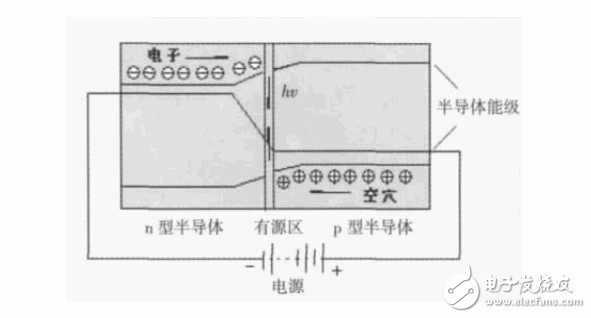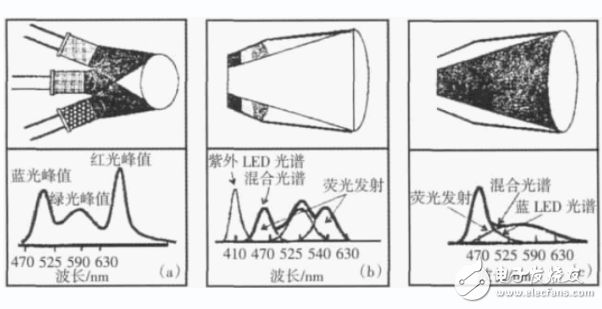Semiconductor lighting is regarded as the third generation of lighting devices, which can be used in large-screen color display, special lighting, traffic signals, multimedia display LCD backlights, optical communications and other fields. Because it is a cold light source, semiconductor lighting not only has no pollution to the environment, but also has a power saving efficiency of more than 90% compared with traditional incandescent lamps and fluorescent lamps. Semiconductor technology is also known as LED lighting technology in the industry, mainly including LED core technology, LED packaging technology and LED application technology. In recent years, LED chip technology has developed rapidly under the support of various countries, and the size of LED chips is getting bigger and bigger. The power is getting bigger and bigger, the power of a single LED chip can be made into a large 3W LED installation technology, and the size, shape and function of the packaged product are continuously developed and improved. It provides ample space for the design and manufacture of LED application technology while highlighting the diversity, flexibility, complexity and breadth of LED lighting technology. The United States, Japan, South Korea and other countries and regions have launched semiconductor lighting plans in recent years, investing heavily in research and development. The world's three major lighting manufacturers - General Electric, Philips, Osram have been working with semiconductor companies to form a semiconductor lighting company. Under the initiative of several units such as the US Department of Energy and the US Optoelectronic Industry Development Association, Sandia National Laboratories began drafting the US semiconductor lighting technology development blueprint (2002-2020) in March 2001, aiming at the next generation of lighting. Planning provides technical arguments. At the same time, Japan is also vigorously developing semiconductor lighting technology, which is typically the “Japan 21st Century Lighting Projectâ€, which is developed by the Japan Research and Development Center of Metals and the New Energy Industry Technology Development Organization (NEDO). ) A national plan initiated and organized for a period of five years. The program's participating institutions include four universities, 13 companies and an association aiming to increase the energy efficiency of lighting to traditional fluorescent lamps by using long-lived, thinner and lighter GaN efficient blue and ultraviolet LED technologies. Double (ie reduce the energy consumption of traditional lighting) and reduce the production of CO2. The entire plan's financial reserves were 6 billion yen. The most popular ones today are the application research of III-nitride light-emitting diodes such as InGaN, AlGaN, and GaN. The blue-green, blue, and ultraviolet light emitted by these tubes can be combined with red and green light-emitting diodes to form white light. Can be used directly to stimulate the phosphor to emit white light. Therefore, nitride light-emitting diodes are the first choice for white light sources. They will replace incandescent, fluorescent and other light sources and become the mainstream of future white lighting. Therefore, nitride light-emitting diodes have become a new generation of semiconductor optoelectronic devices, and will play an irreplaceable role in future energy-saving lighting. At the same time, the luminous efficiency of LED devices is increasing by about 10 times every 10 years. In particular, GaN blue-green LEDs, which appeared in the early 1990s, have developed particularly rapidly, with luminous efficiency increasing by a factor of 100 in 10 years. It is also because of the emergence of GaN-based blue-green LED devices that make up for the shortcomings of LED devices in terms of short wavelengths, not only achieving full-color LED display, but also making LED white light illumination possible. With the rapid development of material growth and fabrication technology, LED devices have evolved from early indications (typical injection currents of 20 mA) to power types (currently typical injection currents of 350 mA), and applications have expanded from stateful representation to nightscape decoration. Traffic signal indication, car lighting, large screen full color display, etc. The semiconductor illumination source with GaN-based power blue LED as the core is considered as the third generation illumination source after incandescent lamp and fluorescent lamp, and has become a research hotspot in the field of optoelectronics at home and abroad. Compared with the traditional light source, the semiconductor light source operating in full solid state has the potential advantages of high luminous efficiency, long life, small volume, fast response, vibration and shock resistance, environmental protection, safe use, etc., and has broad application prospects. The semiconductor light-emitting diode is the core of semiconductor illumination. The principle of illumination is shown in Figure 1. Under the condition of forward bias of the pn junction, the electrons are injected into the active region of the device to recombine spontaneous emission and convert the electrical energy into light energy. . Since the 1950s, the wavelength of LEDs has expanded from infrared to visible and ultraviolet. The wavelength of the LED device is determined by the bandgap energy of the material. The gallium nitride-based LED material is a direct bandgap semiconductor material, including aluminum nitride (AIN), indium nitride (InN), gallium nitride (GaN), and alloys thereof. Bandgap energy covers the visible, ultraviolet and deep ultraviolet bands. Figure 1 LED working principle diagram 1) Based on the principle of three primary colors, white light is synthesized by using three primary color LEDs of red, green and blue, as shown in Fig. 2(a); 2) using ultraviolet LED to excite the three primary color phosphors, and the light emitted by the phosphors synthesizes white light, as shown in Fig. 2(b); 3) The blue light phosphor is excited by the blue LED to realize the binary mixed white light, as shown in Fig. 2(c). Figure 2 3 ways to achieve white solid-state lighting (a) three primary color LEDs to synthesize white light; (b) ultraviolet LED excitation of the three primary color phosphors to achieve white light; (c) Blue LEDs excite yellow phosphors to achieve binary mixed white light By using three primary color LEDs to mix white light, not only can the ideal white light spectrum be realized, but also the color of the light source can be adjusted. However, the performance of the three primary color LEDs is strict, and the peripheral circuits such as the driving circuit are also complicated. Therefore, the cost performance is high, but it is applicable. In the case of high color requirements. The use of ultraviolet LEDs to excite trichromatic phosphors to achieve white light is currently lacking high-power UV LEDs and high-efficiency, high-reliability UV phosphors, so it is not yet practical. The blue phosphor LED excitation method has a mature phosphor and a high-efficiency, high-reliability blue light source. Although the color rendering index is slightly insufficient, the scheme has the highest lumen efficiency and is currently widely used. Unless otherwise specified in the following discussion, semiconductor illumination refers to the technical approach of exciting yellow phosphors with blue LEDs. Regular GFCI Receptacle Outlet Lishui Trimone Electrical Technology Co., Ltd , https://www.3gracegfci.com
